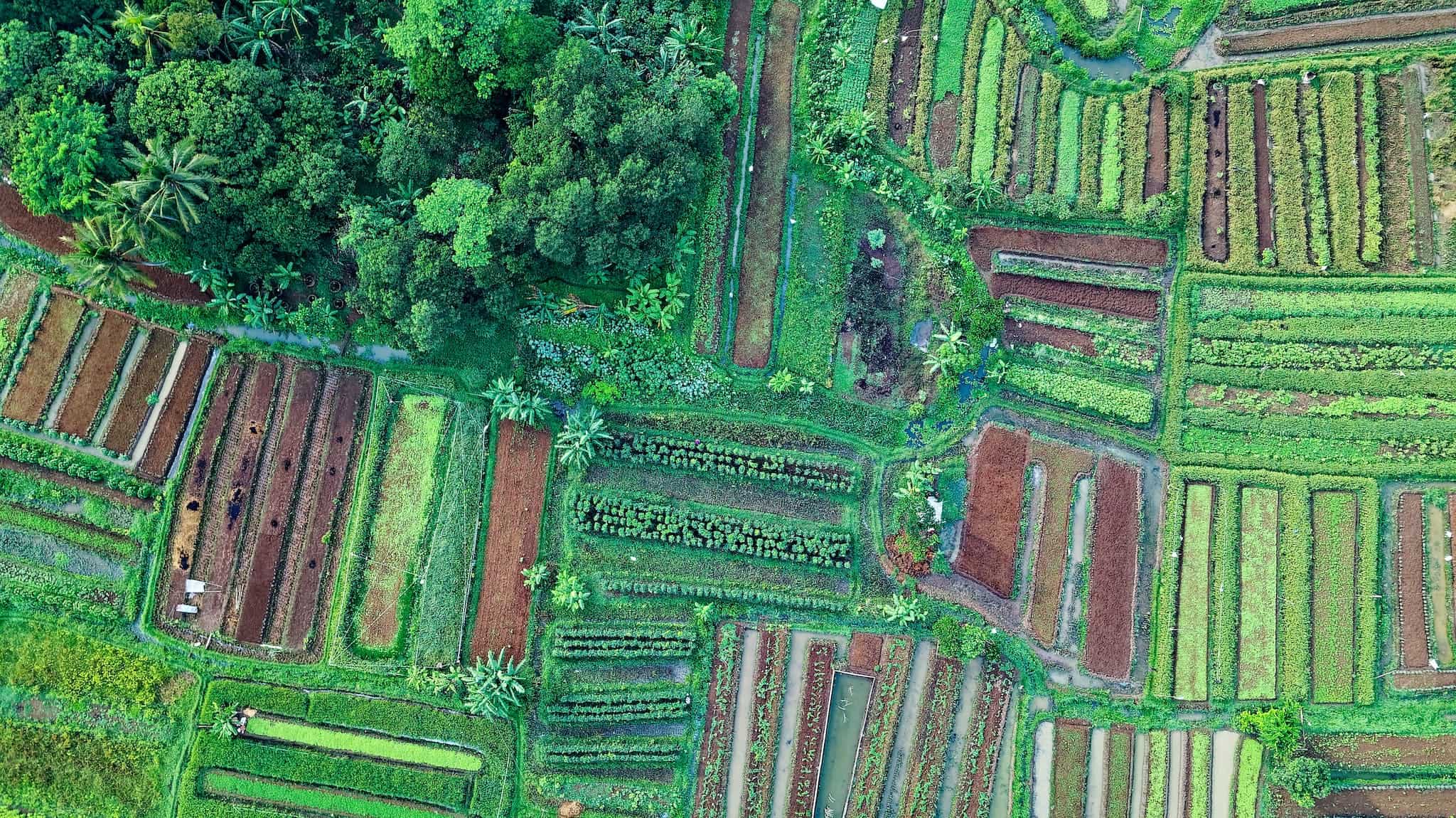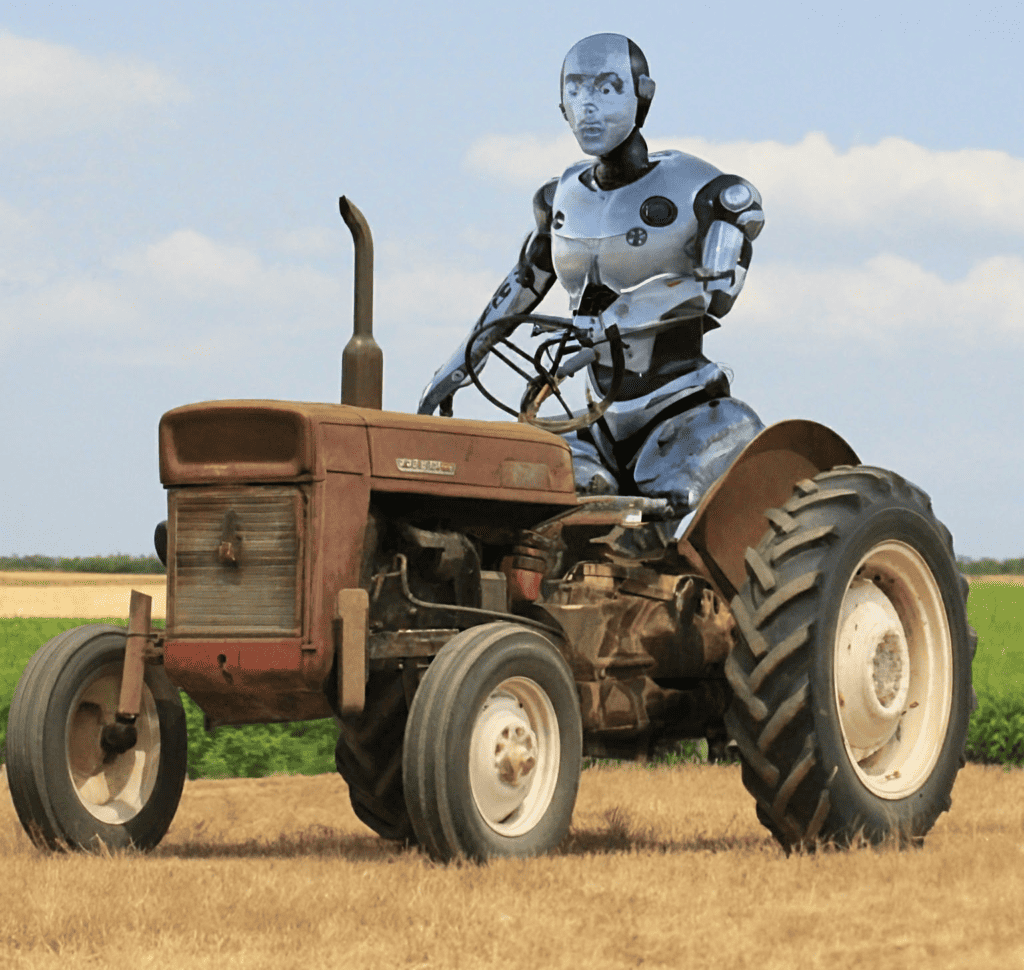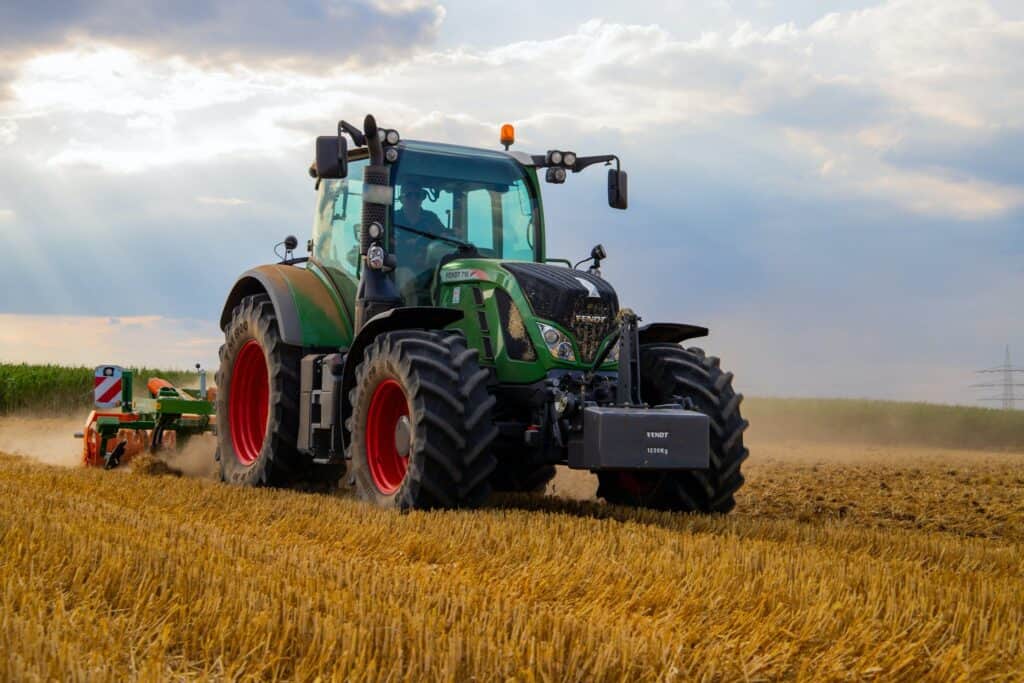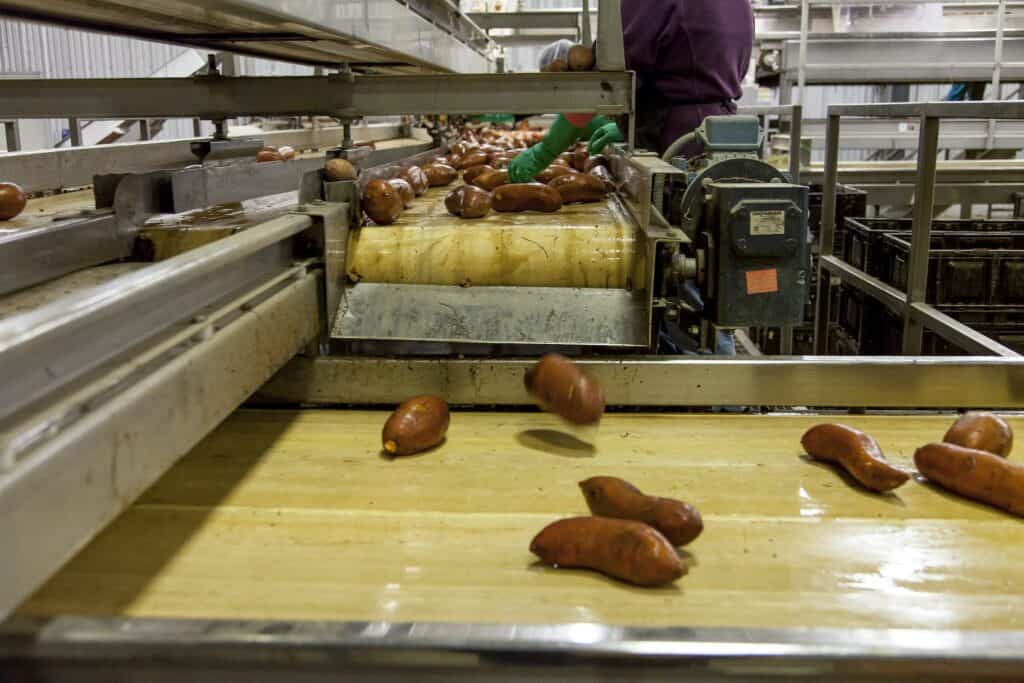What is Regenerative Agtech? Exploring the Benefits of Sustainable Agriculture

In our rapidly changing world, the need for sustainable agriculture solutions is more urgent than ever. Regenerative agtech holds the key to unlocking the full potential of our agricultural systems, transforming them from a source of greenhouse gases to a powerful tool for carbon sequestration. Imagine a world where farming not only provides us with nutritious food but also plays a vital role in mitigating climate change and preserving our planet for future generations.
This blog post will take you on a journey through the world of regenerative agtech, from its emergence and key players to the innovative technologies powering it and the numerous benefits it brings. We’ll explore the challenges and barriers to adoption, delve into real-life case studies, and look to the future of this transformative approach to agriculture. Get ready to discover the incredible potential of regenerative agtech to revolutionize our food systems and protect our planet.
Key Takeaways
Regenerative Agtech is an innovative solution to soil degradation, climate change, and food security.
It offers numerous benefits such as improved soil health, enhanced biodiversity & increased profitability for farmers worldwide.
Technologies like precision farming and robotics are revolutionizing regenerative agriculture for a more sustainable future!
The Emergence of Regenerative Agtech

Regenerative agriculture, including regenerative organic agriculture, is a game-changing approach to farming that aims to restore soil and ecosystem health, address inequity, and ensure our land, waters, and climate are left in a better state for future generations. Regenerative farmers can enhance soil health, enrich soil organic matter, and foster biodiversity by adopting regenerative agriculture practices such as crop rotation, cover cropping, and no-till farming, which also help in mitigating climate change. By implementing regenerative agricultural practices, regenerative farming is gaining traction worldwide as a powerful solution to the climate crisis and the need for sustainable food production.
Soil degradation, climate change, and food security present pressing challenges that call for innovative solutions, making the case for regenerative agtech compelling. Regenerative agtech offers exciting opportunities to combat these issues, from optimizing inputs and reducing soil disturbance to promoting biodiversity and ecosystem services. As a testament to human ingenuity, volunteers in Pennsylvania are even burying cotton underwear to monitor soil health, a simple yet innovative way to advance regenerative agriculture.
Driving the regenerative agtech movement are key players such as:
Startups, pioneering cutting-edge technologies to empower farmers in implementing regenerative practices
Research institutions, dedicated to discovering the most effective methods and developing innovative tools to aid farmers
Established companies, investing in regenerative agriculture and developing technologies to help farmers apply regenerative practices
All these players are collaborating to develop and promote sustainable farming technologies.
The Need for Regenerative Agtech
The challenges of soil degradation, climate change, and food security are growing more urgent by the day, and regenerative agtech is stepping up to provide the solutions we desperately need. By implementing regenerative agriculture principles, farmers can tackle these challenges head-on and create a more sustainable, resilient, and productive agricultural system.
Regenerative agtech offers a plethora of benefits such as:
Improved soil health
Enhanced biodiversity
Increased profitability
Sustainability
These benefits are undeniable, making regenerative agtech an increasingly attractive choice for farmers and ranchers worldwide. The more we invest in regenerative agtech, the better equipped we’ll be to address the challenges of soil degradation, climate change, and food security.
The power of human ingenuity is displayed through innovative examples of regenerative agtech found across the globe. Volunteers in Pennsylvania are burying cotton underwear to monitor soil health, a simple yet powerful method to advance regenerative agriculture. As more and more people recognize the value of regenerative agtech, we can expect even more groundbreaking solutions to emerge, helping us create a more sustainable and resilient agricultural system.
Key Players in Regenerative Agtech
The regenerative agtech movement is propelled by a powerful coalition of startups, research institutions, and established companies, all collaborating to create and advance sustainable farming technologies that can replace conventional agriculture practices. Each player brings unique strengths and expertise to the table, driving innovation and fostering a spirit of collaboration.
Startups are at the forefront of regenerative agtech, developing exciting new technologies that empower farmers to implement regenerative practices and reduce carbon dioxide emissions. Their nimble approach and focus on innovation enable them to quickly adapt to the evolving needs of the agriculture sector and develop cutting-edge solutions.
Research institutions significantly contribute to the advancement of regenerative agtech by identifying the most effective methods for implementing regenerative agriculture and developing innovative technologies that assist farmers. Meanwhile, established companies are investing in regenerative agriculture and enthusiastically developing technologies to help farmers apply regenerative practices. Together, these key players are shaping the future of regenerative agtech and transforming agriculture for the better.
Technologies Powering Regenerative Agriculture

A variety of innovative technologies, including precision farming, soil health monitoring systems, and robotics and automation, drive regenerative agriculture. These technologies enable farmers to monitor and manage soil health, optimize farming practices using data-driven insights, and create detailed field maps through digital tools. As a result, regenerative agriculture not only supports sustainable farming practices but also helps enhance the overall ecosystem of the soil, leading to improved soil health, enhanced biodiversity and ecosystem services, and increased profitability and sustainability.
Regenerative agtech provides a wealth of solutions to modern agriculture challenges, from the advanced data analysis of precision farming to real-time soil health monitoring and the efficiency of robotics and automation. Let’s take a closer look at these revolutionary technologies and how they’re shaping the future of farming.
Precision Farming Technologies
Precision farming technologies are transforming agriculture by allowing farmers to:
Optimize inputs
Monitor soil health
Understand the specific needs of their plants
Provide the right treatment, at the right time, and in the right amount
By using digital tools like soil-scanning sensors and data analytics, precision farming helps farmers implement more sustainable and efficient farming practices. This data-driven approach is a game-changer for regenerative agriculture.
Precision farming assists farmers in creating more sustainable and productive farming practices by:
Optimizing inputs
Monitoring soil health
Optimizing the application of crop protection products and fertilizers
Reducing waste
Minimizing the environmental impact of their operations
In short, precision farming technologies empower farmers to make better decisions for their crops, their land, and the planet.
Moreover, the adoption of precision farming technologies can lead to significant cost savings for farmers by:
Reducing the need for manual labor and the associated costs
Optimizing operations and increasing efficiency
Reducing the use of manual labor and crop inputs, ultimately leading to lower labor costs
In essence, precision farming is a win-win for farmers and the environment.
Soil Health Monitoring Systems
In regenerative agriculture, soil health monitoring systems serve as a potent tool, offering vital real-time soil condition data that enables farmers to make informed decisions and act to improve overall soil quality. By conducting soil health tests to establish a baseline and monitor improvements over time, farmers can gain a better understanding of:
microbial diversity
nutrient levels
organic matter content
other indicators of soil health
With the information provided by soil health monitoring systems, farmers can optimize fertilizer usage, identify potential issues such as nutrient deficiencies or imbalances, and take timely actions to maximize crop health and productivity. In addition, soil health monitoring systems can collect data from multiple sources, such as sensors, satellite imagery, and weather data, providing a comprehensive view of soil conditions and enabling farmers to make the best decisions for their land.
In short, soil health monitoring systems are revolutionizing regenerative agriculture by offering real-time data and insights that empower farmers to make informed decisions about soil management practices. By understanding and addressing the needs of the soil, farmers can create more sustainable and productive farming systems, ultimately improving soil health and the overall health of our planet.
Robotics and Automation
In regenerative agriculture, robotics and automation play a vital role, aiding in the reduction of labor costs, enhancement of efficiency, and minimization of soil disturbance. Agricultural robots equipped with artificial intelligence and machine learning capabilities can perform tasks such as planting, weeding, and harvesting with incredible precision, reducing the need for large-scale soil disturbance.
Furthermore, automation allows for the use of ultra-light tractors that help prevent soil compaction problems. By minimizing soil disturbance, regenerative agriculture practices can maintain soil health, increase biodiversity, and foster sustainable farming systems, all of which are crucial for a healthy environment.
In recent years, there have been exciting advancements in robotics and automation for regenerative agriculture. Some companies leading the charge in this field include:
Agrobot
Agreena
Small Robot Company
SwarmFarm
Asimo Multitech
As these technologies continue to evolve and become more accessible, we can expect to see even greater efficiency and sustainability in regenerative agriculture practices.
Benefits of Integrating Agtech into Regenerative Practices

The integration of agtech into regenerative practices brings numerous benefits, including improved soil health, enhanced biodiversity, increased profitability, and sustainability. By harnessing the power of innovative technologies like precision farming, soil health monitoring systems, and robotics and automation, farmers can improve soil health, boost crop yields, and create more resilient farming systems.
In addition to the environmental benefits, regenerative agtech can also lead to increased profitability for farmers by reducing input costs and improving overall farm productivity. By optimizing resource use and reducing the need for expensive inputs, regenerative agtech can help farmers save money and create more sustainable farming systems.
Ultimately, the benefits of integrating agtech into regenerative practices are clear. By adopting these innovative technologies, farmers can:
Improve soil health
Enhance biodiversity
Increase farm profitability
Contribute to a more sustainable and resilient global food system
It’s a win-win for farmers, the environment, and future generations.
Improved Soil Health
Agtech solutions can contribute significantly to improved soil health by optimizing inputs, reducing soil disturbance, and promoting soil biodiversity. For example, precision farming technology allows for more precise and targeted soil management practices, preserving soil structure and fertility.
Soil health monitoring systems significantly contribute to soil health improvement by giving farmers essential information about their soil’s condition. By monitoring factors like texture, moisture, pH, organic carbon, temperature, and nutrient levels, farmers can make informed decisions about soil management practices that optimize irrigation, fertilization, and other inputs, resulting in improved nutrient cycling, reduced soil erosion, and enhanced water infiltration.
Ultimately, improved soil health is a cornerstone of regenerative agriculture. By incorporating agtech solutions that help to optimize inputs, reduce soil disturbance, and promote soil biodiversity, farmers can create more sustainable and resilient agricultural systems while enjoying the benefits of increased crop yields and better healthy soil.
Enhanced Biodiversity and Ecosystem Services
Regenerative agtech supports enhanced biodiversity and ecosystem services by promoting diverse cropping systems and minimizing the use of synthetic inputs. Diverse cropping systems can offer a range of advantages, such as promoting ecosystem services, reducing dependency on agronomic inputs, and improving pest and disease control.
Crop diversification can also enhance yields and associated biodiversity, helping to create a more sustainable and resilient agricultural system. Furthermore, diverse cropping systems can provide habitat and food sources for a wide variety of plant and animal species, ultimately contributing to the conservation of biodiversity.
By harnessing the power of regenerative agtech to promote diverse cropping systems and reduce the reliance on synthetic inputs, farmers can play a vital role in preserving and enhancing biodiversity and ecosystem services on agricultural land. In turn, this contributes to a more sustainable and resilient global food system and a healthier planet for all.
Increased Profitability and Sustainability

Farmers can achieve increased profitability and sustainability in regenerative agriculture through the adoption of agtech, which reduces input costs and boosts overall farm productivity. For example, regenerative agriculture practices can help farmers save money by decreasing their dependence on synthetic inputs such as fertilizers and pesticides.
Over time, regenerative agricultural systems offer several benefits for farmers:
They demand fewer external inputs, leading to cost savings.
They boost soil health and fertility, reducing the need for expensive inputs.
Studies have revealed that farms with regenerative practices can be up to 78% more profitable than conventional plots, highlighting the potential financial benefits of agtech adoption.
By integrating agtech solutions into regenerative farming practices, farmers can enjoy:
Increased profitability
Increased sustainability
Contribution to a healthier environment
Contribution to a more resilient global food system.
Challenges and Barriers to Adoption

While regenerative agtech offers numerous benefits and holds exciting potential, challenges and barriers to its adoption remain and need to be addressed. High costs of implementation can be a significant barrier for small-scale farmers and those in developing countries, while a lack of knowledge and training can hinder widespread adoption and limit the potential benefits of regenerative agtech.
Regulatory and policy issues can also create obstacles for the development and adoption of regenerative agtech, as well as impact the incentives for farmers to transition to sustainable practices. Addressing these challenges is crucial for the continued growth and success of the regenerative agtech movement.
By understanding and addressing the challenges and barriers to regenerative agtech adoption, we can pave the way for a more sustainable and resilient global food system, ensuring that the benefits of regenerative agriculture are accessible to all.
High Costs of Implementation
For small-scale farmers and those in developing countries, the significant costs associated with implementing regenerative agtech solutions can pose a considerable barrier. While the long-term benefits of regenerative agriculture are clear, the initial costs of implementing these practices can be prohibitive for some farmers.
The costs of regenerative agtech implementation can vary depending on the specific practices and technologies being implemented, as well as the region and country in which they are being applied. For example, developed countries may face higher labor costs, advanced technology requirements, and stricter environmental regulations, which can add to the initial costs of implementing regenerative agriculture practices. On the other hand, developing countries may experience challenges in accessing the necessary resources and infrastructure for regenerative agtech, leading to higher costs.
Despite the challenges, it’s important to recognize that the long-term benefits of regenerative agtech far outweigh the initial costs. As the industry continues to grow and evolve, it’s likely that the costs of implementation will decrease, making regenerative agtech more accessible to farmers around the world.
Lack of Knowledge and Training
Insufficient knowledge and training in regenerative agtech might pose a roadblock to its widespread adoption and curtail its potential benefits. Farmers may be unaware of the advantages and possibilities of regenerative agriculture technology, or they may lack the necessary training to successfully implement and make use of regenerative agtech tools and practices.
To overcome this barrier, it’s crucial to invest in education and training programs that teach farmers about regenerative agriculture practices and the innovative technologies that support them. By increasing awareness and understanding of regenerative agtech, more farmers can be encouraged to adopt these practices and harness their potential benefits.
As the regenerative agtech industry continues to grow, it’s essential to prioritize knowledge and training in order to ensure its widespread adoption and success. By doing so, we can empower farmers to adopt regenerative practices and contribute to a more sustainable and resilient global food system.
Regulatory and Policy Issues
Regulatory and policy issues may pose challenges for the development and adoption of regenerative agtech and affect the motivation for farmers to transition to sustainable practices. Some of these challenges include:
Lack of understanding and investment from stakeholders
Current regulations and policies that do not support regenerative agriculture
Conflicting signals from agricultural policies
These factors can hinder the adoption of regenerative agtech.
It’s important to address these regulatory and policy issues in order to support the growth and success of regenerative agtech. By creating policies that incentivize regenerative agriculture practices and fostering a regulatory environment that supports the development and adoption of regenerative agtech, we can pave the way for a more sustainable and resilient global food system.
As the regenerative agtech industry continues to evolve, it’s essential to work closely with policymakers, regulators, and stakeholders to ensure that the necessary support and incentives are in place to promote its widespread adoption and success.
Case Studies: Regenerative Agtech in Action

Real-world examples of regenerative agtech in action demonstrate its potential to transform agriculture and promote sustainable farming practices. Here are some examples:
General Mills, a food company, has embraced regenerative agriculture practices to improve soil health and reduce greenhouse gas emissions.
Bec-Hellouin, a farm in France, is pioneering forest-gardening, a regenerative agriculture technique that mimics natural ecosystems to create a diverse and sustainable food production system.
Community-led projects around the world are also using regenerative agriculture to fight climate change and promote sustainable farming practices at the local level.
These inspiring case studies showcase the tremendous potential of regenerative agtech to revolutionize agricultural sustainability and mitigate environmental impacts. By learning from these successful implementations, we can continue to develop and refine regenerative agtech solutions that address the challenges faced by modern agriculture and contribute to a more sustainable and resilient global food system.
The Future of Regenerative Agtech
The future of regenerative agtech is likely to be marked by:
ongoing innovation
collaboration
investment in sustainable farming technologies
efforts to overcome the challenges and barriers to its adoption
As more and more people recognize the value of regenerative agtech, we can expect even more groundbreaking solutions to emerge, helping us create a more sustainable and resilient agricultural system.
In the coming years, we can anticipate exciting advancements in areas like precision farming technology, soil health monitoring systems, and robotics and automation. These technologies will continue to shape the future of regenerative agriculture, enabling farmers to optimize their operations and reduce their environmental impact.
By embracing the potential of regenerative agtech, we can work together to create a brighter, more sustainable future for our planet and the generations to come. The journey has just begun, and the possibilities are limitless.
Summary
Regenerative agtech holds the key to unlocking the full potential of our agricultural systems, transforming them from a source of greenhouse gases to a powerful tool for carbon sequestration and environmental stewardship. From its emergence and key players to the innovative technologies powering it and the numerous benefits it brings, regenerative agtech is poised to revolutionize our food systems and protect our planet.
As we look to the future, continued innovation, collaboration, and investment in sustainable farming technologies will be crucial for addressing the challenges and barriers to regenerative agtech adoption. By working together, we can create a more sustainable and resilient global food system that benefits us all and preserves our planet for future generations.
Frequently Asked Questions
What is the meaning of regenerative agriculture?
Regenerative Agriculture is a sustainable food production system that focuses on restoring soil health, protecting the environment and promoting farm productivity and profitability.
Is regenerative farming legit?
Regenerative farming is a proven, sustainable method that helps protect the environment and produces healthier soils with more organic matter. It’s legit.
Can you make money with regenerative agriculture?
Regenerative agriculture can bring higher profits and crop yields of up to 25%. Studies have shown that farmers who invest in soil-health improving practices tend to have greater profitability than those who use conventional methods, saving them money on synthetic fertilizers and pesticides. Investing in regenerative agriculture can be a great way to increase profits and reduce costs. It can also help to improve soil health, reduce water usage, and increase biodiversity
What is regenerative agtech?
Regenerative agtech is an exciting blend of regenerative agriculture and cutting-edge technologies that enables farmers to reap the benefits of sustainable farming practices, improved soil health, enhanced soil organic matter, climate change mitigation, and increased biodiversity.
How does precision farming contribute to regenerative agriculture?
Precision farming technology helps farmers to monitor and manage soil health more efficiently, optimize farming practices, and create field maps, enabling them to contribute to regenerative agriculture through sustainable farming practices.




